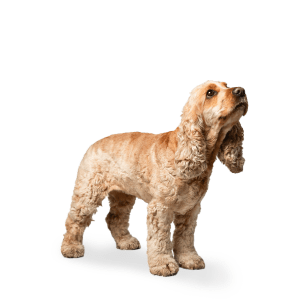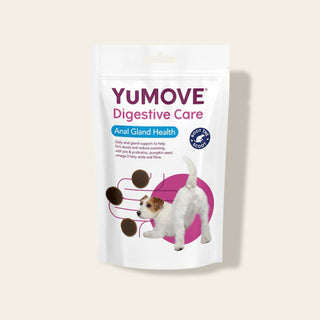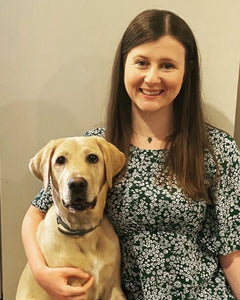

Blocked anal glands in dogs
Dog anal glands – every dog has them, but for around 4% of dogs each year, they can cause problems. Sometimes it’s a one-off issue, but for others, it can become a recurring concern. That’s why understanding what causes full or blocked anal glands in dogs, and knowing how to prevent blocked anal glands in dogs, can make a real difference to your dog’s comfort and wellbeing.
Where are a dogs anal glands?
A dog’s anal glands are located just inside the anus, near the anal sphincter – roughly at the four and eight o’clock positions if you imagine the area as a clock face. These small, round sacs contain a strong-smelling fluid used to scent mark stools – an evolutionary trait dogs rely on to identify one another.
Each time your dog defecates, the passing stool naturally presses on the glands – helping to release a small amount of this fluid onto the poo.

Link Source: https://canineanalglandclinic.com.au/anal-glands-in-dogs
Full anal glands in dogs
Before anal glands become blocked, they become full. You may not notice any signs in your dog if the glands are just very full, or you may see some of the symptoms listed below, as the presentation for full glands are often very similar to blocked anal gland symptoms. Full anal glands will need expression by a veterinarian if they are causing symptoms in your dog.
How to tell if your dog’s anal glands are full
In healthy dogs, the anal glands usually empty on their own when your dog goes to the toilet. If you’ve ever noticed a slight shine on your dog’s poo when you pick it up – that’s a sign the glands are working just as they should.
But if the stool consistency changes – due to diarrhoea, constipation or anything in between – that natural emptying process can be disrupted. When the glands don’t empty properly, they can begin to fill up and thicken – making it harder for your dog to express them on their own.
Over time, this build-up can lead to inflammation, swelling or even infection. You might notice a bulge near the gland area, a strong fishy smell or your dog licking, scooting or fussing more around their back end. These are all signs their anal glands might be full – and it’s a good idea to get them checked by your vet.
Symptoms of blocked anal glands in dogs
Most signs of blocked anal glands in dogs tend to centre around their back end. If your dog seems more focused on their bottom than usual, it could be a sign something’s not quite right.
Keep an eye out for symptoms like:
-
Scooting or dragging their bottom along the floor
- Excessive licking or nibbling at the area
- A strong, fishy smell coming from their bottom
- Swelling or redness around the anus
- Unusual discharge – red, grey or brown – near the bottom
- Crying out or seeming in pain when trying to poo
- Straining to go to the toilet
If you notice any of these signs, it’s a good idea to speak to your vet. They’ll be able to check your dog’s glands and guide you on the next steps.
What causes blocked anal glands in dogs?
Some breeds are more likely to experience blocked anal glands than others. Smaller breeds – like Chihuahuas, Bichon Frises and Toy Poodles – tend to be the most commonly affected. That said, anal gland issues can happen to any dog, so it’s important to know the signs and speak to your vet if anything seems off.
Aside from breed, there are a few other reasons your dog’s anal glands might become full or blocked, including:
-
Allergic skin conditions
- Food allergies
- Ongoing digestive issues in dogs, such as IBD
- Obesity
- Parasites like worms
- A diet that’s too low in fibre
- Anatomical differences – for example, dogs with narrower gland openings
If your dog is struggling with recurring anal gland problems, your vet can help identify the underlying cause and suggest ways to manage or reduce flare-ups.
Can food cause anal gland issues in dogs?
Yes, there can be a link between dog food allergies and anal gland issues in some dogs. When a dog has a food allergy, it can cause inflammation in the digestive tract – and that inflammation can also affect nearby structures, like the anal glands.
One way to explore whether food might be a trigger is by trying a hypoallergenic diet or switching to a novel protein – something your dog hasn’t eaten before – for around 3 to 8 weeks. This kind of exclusion diet can help you and your vet work out whether a food allergy could be playing a role in your dog’s symptoms.

How to help prevent anal gland problems in dogs
When thinking about how to help dogs' anal glands, it’s important to look at the bigger picture. In most cases, the issue isn’t the gland itself – it’s an underlying cause that needs attention. Treating that root cause is often the key to stopping the problem from coming back.
For example:
- If your dog’s diet is low in fibre, adding YuMOVE Anal Gland Health supplements can help firm up their stools and support healthy gland emptying.
- If your dog is overweight, a vet-recommended weight loss plan can relieve pressure on their back end and reduce the risk of gland problems.
- If your dog has a food allergy, a tailored diet trial using novel proteins might be the best route forward.
Some conditions, like allergic skin disease, may not be curable – but with the right long-term management (including medication when needed), they can be controlled. Regular check-ups with your vet are a great way to catch any signs early, before the anal glands become so full they risk infection.
You might be tempted to express your dog’s glands regularly to avoid a problem – but that’s not always the best idea. In fact, repeated expression can cause inflammation and make the openings narrower, which can make things worse in the long run. If regular gland expression is needed, it should always be done under the guidance of your vet, usually every 2-3 months.
Anal gland supplements
If your dog regularly struggles with blocked anal glands, you might want to explore anal gland supplements as part of their daily routine. These come as tablets or powders that can be added to food, and they work by helping to bulk up the stool – mimicking the natural pressure that helps healthy dogs express their glands on their own.
Look for supplements that include ingredients like psyllium husk, omega oils, probiotics and lignocellulose. This combination not only supports the firming of stools, but also offers anti-inflammatory properties and helps keep the gut healthy – thanks to the added benefits of probiotics for dogs.
How to express a dogs anal glands
There are two main ways to express a dog’s anal glands – internal and external. Understanding where the glands are – or referring to a diagram if you have one – can help you feel more confident with the technique.
Internal expression can only be done by a vet or qualified professional, so it’s not something to try at home.
Instead, you can use a method called external expression. Start by putting on gloves, then place your fingers on either side of your dog’s bottom – at the four and eight o’clock positions. Apply gentle, steady pressure inward and slightly upward in a smooth motion. It might take a couple of tries before you notice fluid being released from the corners of the anus.
Not all dogs will tolerate this, so try to make the experience as calm and positive as possible – treats or a Lickimat can be a great distraction.
Important: If you see any blood or notice a hole in the skin around your dog’s anus, don’t attempt to express the glands. These could be signs of infected anal glands in dogs – which need prompt veterinary attention. In most cases, your vet will prescribe antibiotics and anti-inflammatories, and with the right treatment, healing usually takes one to two weeks.
Conclusion
Anal gland issues are a common problem, and your vet is the perfect choice for help to regularly express full glands, or treat infected or blocked glands. Through regular expression your vet will get to know when your dog's glands are abnormally full or impacted, and can help give advice on treatment or prevention of the issue again. Blocked anal glands are easily treated and dogs can live a healthy life if you add anal gland care into their general health routine.
Read more about medical conditions and symptoms in dogs.





